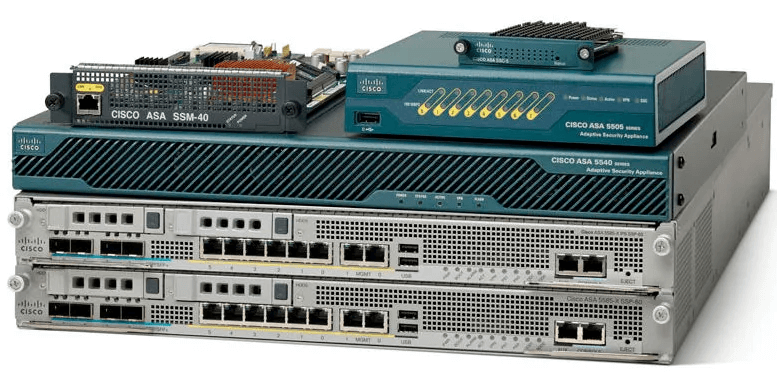Cisco Patches Critical ASA/FTD VPN Zero-Day (CVE-2025-20333)
Actively exploited Cisco ASA/FTD zero-day enables unauthenticated RCE via VPN portal. Get affected versions, IOCs, and the fixed releases.

TL;DR – Executive Summary
Action required: Patch all affected Cisco ASA and FTD systems immediately and verify no compromise has occurred.
Overview of the Vulnerability
- CVE-2025-20333 is a Remote Code Execution (RCE) flaw in Cisco ASA and FTD VPN web services.
- Root cause: Buffer overflow (CWE-120) from improper input validation.
- Exploitation: Specially crafted HTTPS requests to the WebVPN interface enable attackers to execute code with root-level privileges.
- Actively exploited: Cisco PSIRT confirmed real-world attacks; discovered during a TAC support case with national cyber agencies.
- Severity: CVSS 9.9 (Critical) – total firewall compromise possible.
Cisco also disclosed CVE-2025-20362 (CVSS 6.5), a vulnerability that allows for authentication bypass. On its own, it’s moderate—but chained with CVE-2025-20333, it enables unauthenticated device takeover. Threat actors (“UAT4356 / Storm-1849,” linked to the ArcaneDoor campaign) are actively exploiting both.
Affected Systems
Vulnerable Cisco products:
- ASA Software (with WebVPN/AnyConnect enabled)
Versions 9.16, 9.17, 9.18, 9.19, 9.20, 9.22, and early 9.23 builds.
Covers ASA 5500-X, ASAv, and similar. - FTD Software
Versions 7.0, 7.2, 7.4, 7.6, 7.7 (pre-fix).
Covers Firepower appliances and Secure Firewall 3100/4100 series. - Cisco IOS / IOS XE / IOS XR
Not directly impacted by this chain, but patched separately for CVE-2025-20363.
Exposure note: Devices are exploitable only if AnyConnect SSL VPN or IKEv2 client services are enabled.
Exploitation Details
- Attack vector: HTTPS requests to the VPN web portal.
- No credentials or user interaction required (when chaining CVE-2025-20362 + CVE-2025-20333).
- Observed attacker actions:
- Disabled security logs to hide activity.
- Deployed firmware implants (e.g., RayInitiator bootkit).
- Installed payloads like LINE VIPER to spy on VPN sessions.
Impact: Full device takeover – including the ability to decrypt VPN traffic, steal credentials, alter firewall rules, or pivot into internal networks.
How to Detect
Security teams should prioritize detection using these methods:
- Vulnerability Scanning
- Qualys QIDs: 317736, 317737, 317740, 317741
- Tenable/Nessus: Plugin ID 265943
- Manual Checks
show running-config | include webvpn(ASA)show running-config crypto ikev2 | include client-services(ASA)- VPN policies in FMC (FTD)
show versionto confirm software release
- Indicators of Compromise
- Missing syslogs (302013, 302014, 609002, 710005)
- Unexpected crashes or reboots
- “Impossible travel” VPN logins
- Stalled
show checkheapsruns
- Network Monitoring
- Snort rules: 65340 (CVE-2025-20333), 46897 (CVE-2025-20362)
- IDS/IPS alerts for unusual VPN traffic
Remediation Guidance
Patch immediately – no workarounds exist.
- ASA Fixed Versions:
9.16.4.85, 9.17.1.45, 9.18.4.47, 9.19.1.37, 9.20.3.7, 9.22.1.3, 9.22.2.14, 9.23.1.19 - FTD Fixed Versions:
7.0.8.1, 7.2.10.2, 7.4.2.4, 7.6.2.1, 7.7.10.1
Temporary mitigations (if patching is delayed):
# Disable WebVPN (ASA)
configure terminal
no webvpn
# Disable IKEv2 client-services (ASA)
crypto ikev2 disable client-services
(Disabling VPN services will cut off AnyConnect access—use only as an emergency stopgap.)
Recommendations for Security Teams
- Emergency patch deployment – invoke the emergency change process.
- Verify & audit – confirm patched versions, check configs and accounts.
- Increase monitoring – enable verbose logging, watch Snort SIDs.
- Incident response if compromised – isolate, preserve forensics, re-image if needed.
- Network hardening – restrict VPN access with ACLs, segmentation.
- Update signatures & IOCs – deploy Cisco Talos and CISA indicators.
- User comms & MFA – reset VPN credentials, enforce MFA.
- Long-term hardening – enable Secure Boot on newer models, retire end-of-life hardware.
- Tabletop exercises – rehearse response scenarios for firewall compromise.
Timeline
- May 2025 – Attacks discovered; Cisco & agencies investigate.
- Jul–Sep 2025 – Exploits used in zero-day campaigns.
- Sep 25, 2025 – Cisco releases patches; CISA issues Emergency Directive 25-03.
- Early Oct 2025 – Rapid7 confirms root cause; active exploitation continues globally.
External Sources
- Cisco Advisory – CVE-2025-20333
- Cisco Advisory – CVE-2025-20362
- CISA Emergency Directive 25-03
- NVD – CVE-2025-20333
Conclusion
CVE-2025-20333 and CVE-2025-20362 are being actively exploited to compromise Cisco ASA/FTD firewalls. Together, they allow unauthenticated attackers to seize complete control of critical perimeter defenses.
The only safe path:
- Patch immediately.
- Audit and hunt for compromise.
- Harden and monitor for ongoing threats.
Your firewall should be protecting you, not working against you. Update now.




